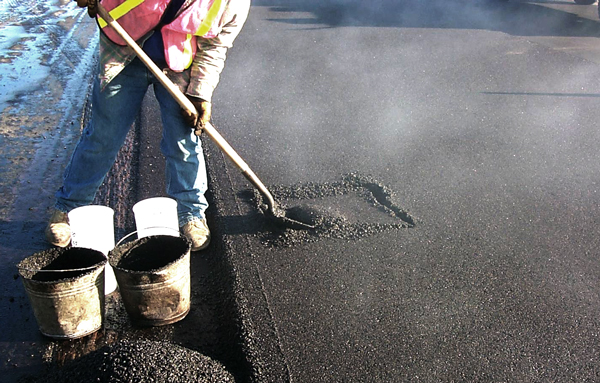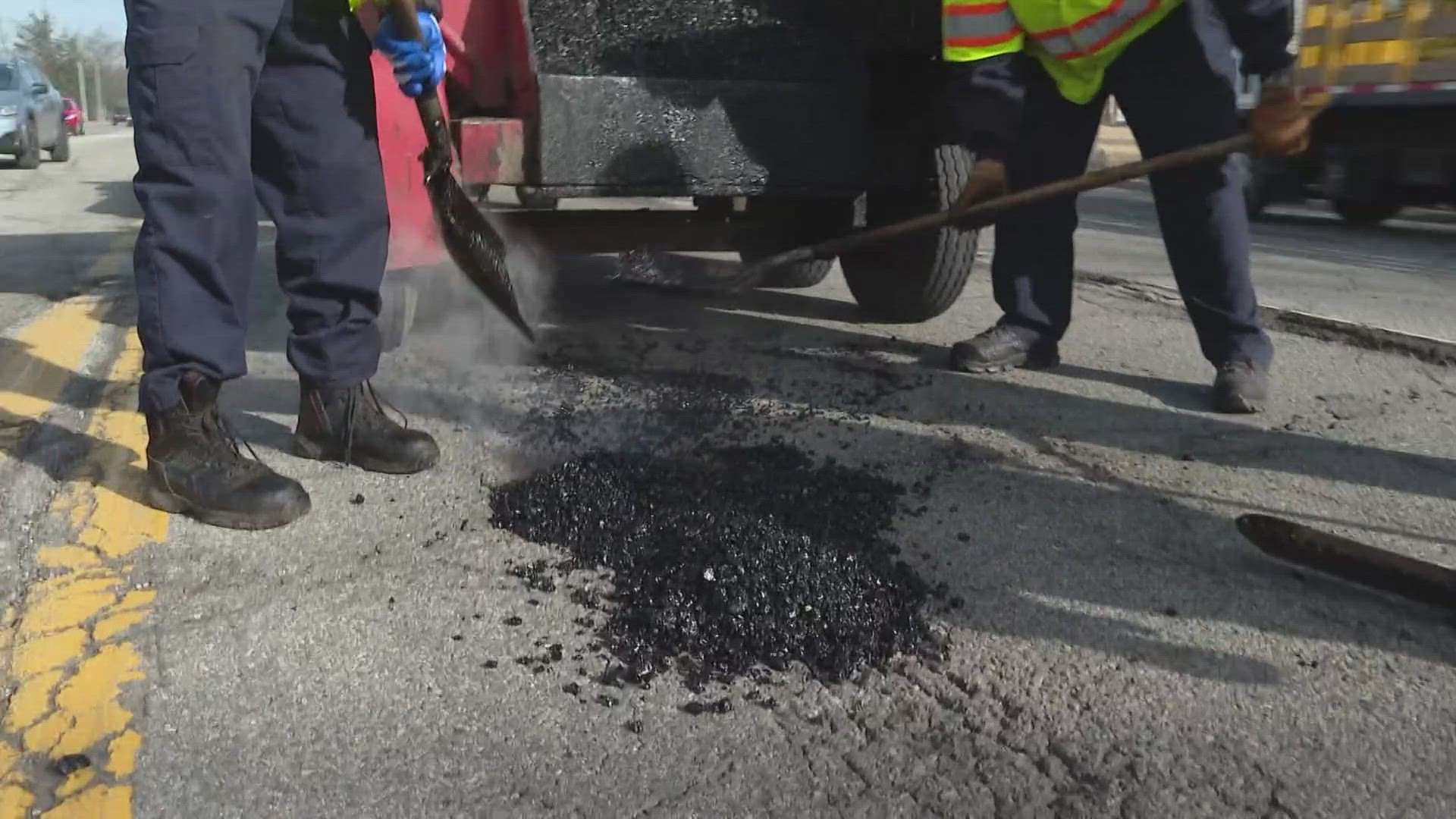Experience the Distinction: Hot Mix Asphalt Paving for Regrading Projects
Experience the Distinction: Hot Mix Asphalt Paving for Regrading Projects
Blog Article
Opening the Secrets of Warm Mix Asphalt Innovation
Exploring the depths of hot mix asphalt technology uncovers a world where accurate solutions and careful processes assemble to form our roads and framework. The blend of binders, fillers, and accumulations isn't merely a construction job however a tactical orchestration of sturdiness and performance. As we peer right into the complex dance of elements, a tapestry of resilience and sustainability unfolds. What lies beneath this surface area of asphaltic proficiency, and what tricks wait to be revealed in the realm of leading technologies?
Value of Hot Mix Asphalt
Warm Mix Asphalt plays a crucial function in modern infrastructure growth as a result of its longevity and cost-effectiveness. As the most frequently used leading product for roadways, highways, and car park, Warm Mix Asphalt offers a series of benefits that add to its importance in construction tasks. One crucial advantage is its capability to stand up to heavy web traffic lots and harsh weather problems, offering a dependable and lasting surface for transportation networks. Additionally, Warm Mix Asphalt is economical in both initial construction and lasting upkeep, making it a favored option for several infrastructure tasks.
The longevity of Hot Mix Asphalt stems from its composition, which includes aggregates, binder, and filler materials that are carefully chosen and blended to meet specific efficiency demands. In general, the significance of Hot Mix Asphalt in infrastructure advancement can not be understated, as it continues to be a cornerstone of contemporary building and construction practices.
Elements of Asphalt Mixes
The make-up of asphalt blends contains thoroughly picked aggregates, binder, and filler products that are essential for accomplishing details efficiency needs. Aggregates are the key part of asphalt mixes, supplying stamina and security. These accumulations can be natural, such as crushed rock or crushed rock, or artificial, like recycled products from old sidewalks. The binder, usually bitumen or asphalt cement, holds the accumulations together and supplies versatility and resilience to the mix. The selection of the binder is essential as it straight affects the mix's efficiency in various weather. Fillers, such as moisturized lime or Rose city concrete, are made use of to enhance the mix's workability and aging resistance. Angled Parking.
The mix and proportion of these components play a significant duty in determining the top quality and efficiency of the asphalt mix. Designers very carefully design the mix to satisfy particular needs, considering aspects like traffic volume, environment problems, and sidewalk life expectancy. Appropriate option and harmonizing of aggregates, binder, and fillers are essential for creating durable, resilient asphalt pavements.
Mixing and Production Methods

When the accumulations are picked, the binder, frequently asphalt concrete, is added to bind the products with each other. The binder's quality and amount significantly influence the mix's resistance, stamina, and versatility to ecological aspects. In addition, fillers like hydrated lime or Rose city concrete may be incorporated to enhance particular qualities of the asphalt mix, such as its workability or moisture resistance.
During manufacturing, the accumulations and binder are heated up, normally between 250-325 ° F(121-163 ° C ), to help with mixing and make certain correct layer of the aggregates. The blending procedure must be comprehensive to achieve an uniform blend that advertises the preferred performance attributes of the asphalt. Numerous techniques, such as set blending or drum mixing, are employed to accomplish premium and consistent asphalt mixes for building projects.
Aspects Impacting Asphalt Performance
Elements influencing asphalt performance incorporate a series of variables that influence the sturdiness, long life, and general high quality of asphalt sidewalks. One vital element is the high quality of products used in the asphalt mix. The kind and resource of aggregates, the binder quality, and the ingredients all play a significant duty in identifying the performance of the asphalt sidewalk. The gradation of aggregates is critical as it influences the mix's stability, workability, and resistance to rutting and splitting.

Style factors to consider, such as pavement thickness and drain, are crucial in making certain the long-term performance of the asphalt pavement. By thoroughly thinking about these professionals, engineers and factors can optimize asphalt performance and boost the solution life of pavements.
Lasting Practices in Asphalt Technology

Furthermore, the development of warm-mix asphalt (WMA) technologies has actually gained traction in the last few years. WMA enables the production and placement of asphalt blends at reduced temperatures compared to typical hot-mix why not try this out asphalt, resulting in lowered energy consumption and greenhouse gas discharges. The use of porous asphalt mixes can aid minimize stormwater drainage issues by enabling water to infiltrate via the pavement and right into the ground, promoting all-natural water filtration and reenergize processes. By applying these lasting techniques, the asphalt industry can add to building an extra eco-friendly and resistant facilities network.
Final Thought
In verdict, warm mix asphalt innovation plays a crucial role in contemporary framework development as a result of its sturdiness and cost-effectiveness. By very carefully stabilizing parts, employing correct blending techniques, and thinking about numerous factors, designers can develop top notch asphalt mixes that stand up to heavy web traffic loads and click to read more harsh weather. Embracing sustainable practices, such as using warm-mix modern technologies and recycled products, additionally enhances the ecological friendliness of asphalt technology.
Blending and production techniques in warm mix asphalt technology entail the exact combination and processing of accumulations, binder, and fillers to develop a high-performance and durable asphalt mix.Aspects influencing asphalt performance include an array of variables that influence the durability, durability, and total quality of asphalt pavements. Sustainable practices in asphalt technology incorporate different initiatives aimed at lowering the ecological impact of asphalt manufacturing and paving procedures. By integrating redeemed asphalt sidewalk (RAP) and recycled asphalt tiles (RAS) right into new asphalt mixes, the industry can significantly lower the consumption of raw products and power, while also reducing landfill waste.
WMA allows for the visit this site right here manufacturing and placement of asphalt mixes at reduced temperatures compared to standard hot-mix asphalt, resulting in reduced power intake and greenhouse gas discharges.
Report this page